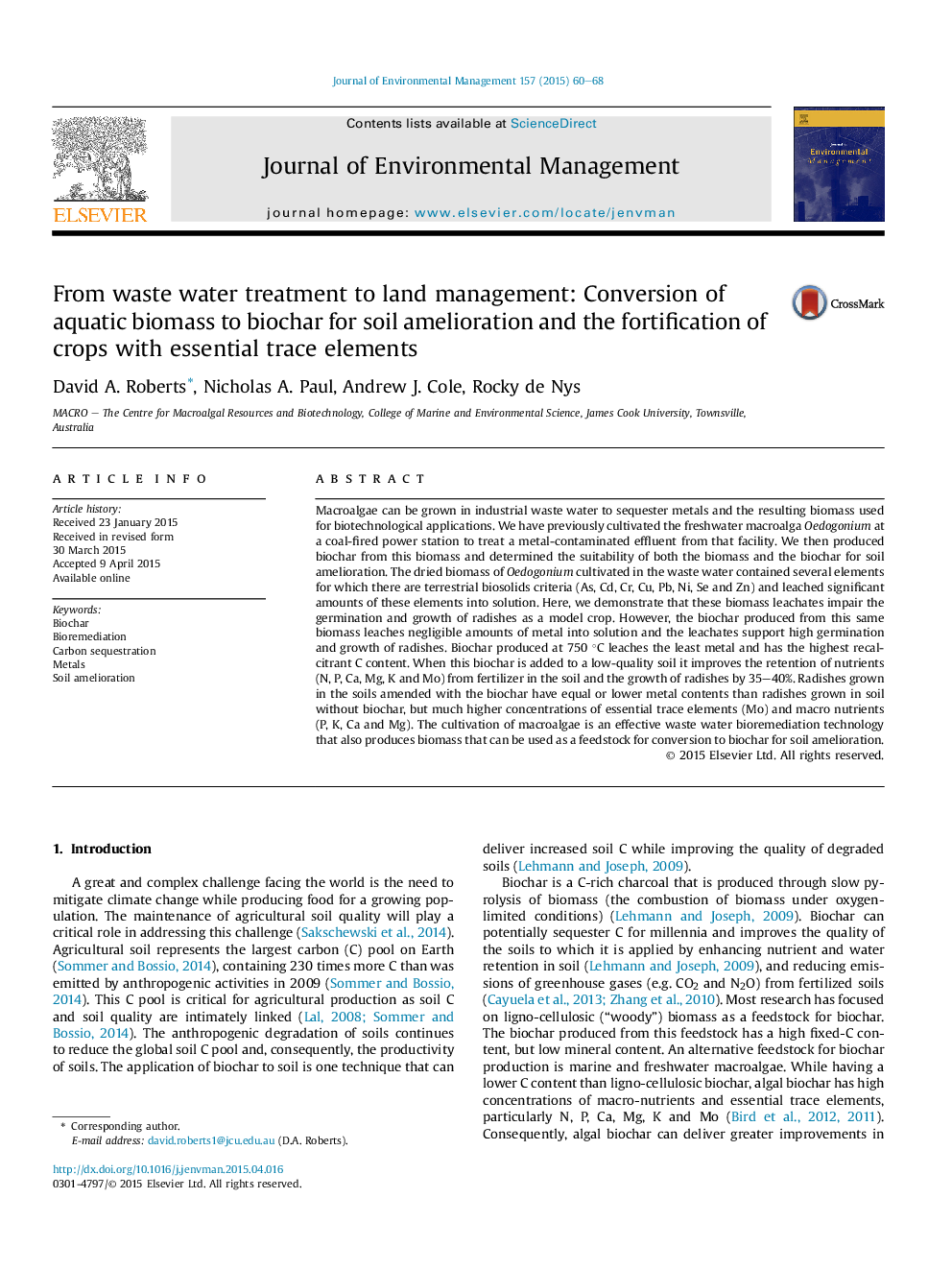| Article ID | Journal | Published Year | Pages | File Type |
|---|---|---|---|---|
| 7482084 | Journal of Environmental Management | 2015 | 9 Pages |
Abstract
Macroalgae can be grown in industrial waste water to sequester metals and the resulting biomass used for biotechnological applications. We have previously cultivated the freshwater macroalga Oedogonium at a coal-fired power station to treat a metal-contaminated effluent from that facility. We then produced biochar from this biomass and determined the suitability of both the biomass and the biochar for soil amelioration. The dried biomass of Oedogonium cultivated in the waste water contained several elements for which there are terrestrial biosolids criteria (As, Cd, Cr, Cu, Pb, Ni, Se and Zn) and leached significant amounts of these elements into solution. Here, we demonstrate that these biomass leachates impair the germination and growth of radishes as a model crop. However, the biochar produced from this same biomass leaches negligible amounts of metal into solution and the leachates support high germination and growth of radishes. Biochar produced at 750 °C leaches the least metal and has the highest recalcitrant C content. When this biochar is added to a low-quality soil it improves the retention of nutrients (N, P, Ca, Mg, K and Mo) from fertilizer in the soil and the growth of radishes by 35-40%. Radishes grown in the soils amended with the biochar have equal or lower metal contents than radishes grown in soil without biochar, but much higher concentrations of essential trace elements (Mo) and macro nutrients (P, K, Ca and Mg). The cultivation of macroalgae is an effective waste water bioremediation technology that also produces biomass that can be used as a feedstock for conversion to biochar for soil amelioration.
Related Topics
Physical Sciences and Engineering
Energy
Renewable Energy, Sustainability and the Environment
Authors
David A. Roberts, Nicholas A. Paul, Andrew J. Cole, Rocky de Nys,
